 |
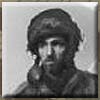 |
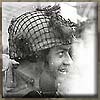 |
 |
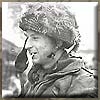 |
| Menu: |
| Home |
| Store |
| Buying |
| X-Sales |
| Info |
| FAQ's |
| Contact |
| Links |
Kings Own Royal Regiment Cap Badge WW2: British Army infantry cap badge for the Kings Own Royal Regiment. I think it is of WW2 origin but it could date to WW1, so would welcome any comments. In very good condition. Nice strong metal cap badge: Details of regiment below: The Regiment had the unique distinction of being known as "The King's Own" and of wearing the Lion of England as its cap badge. Raised in the West Country on 13th July, 1680 by the Earl of Plymouth for Service in Tangiers the King's Own became one of the oldest regiments of foot in the British Army. On its return home from Tangiers it was made part of the permanent standing army and was numbered as the 4th Regiment of Foot. At first it was employed in the personal service of the Sovereign - with James II's army quelling the rebellion of the Duke of Monmouth at Sedgemoor in 1685 - then from 1690 to 1695 in Ireland and the Netherlands fighting to establish William of Orange on the throne of England. Its first honour NAMUR 1695 was gained during this war. The Regiment was converted to Marines in 1703 and as Marines took part in the capture and subsequent long and successful defence of GIBRALTAR. They were restored to the Army in 1710. It was shortly after this that King George I fixed the titles of many of his regiments and in a Royal Warrant of July 1715 the regiment was first officially known as the King's Own. During the Scottish rebellion of 1745 the Regiment fought both at Falkirk and at Culloden. At the former engagement they were one of the few regiments that successfully withstood the fury of the Highlanders charge and later the feat was repeated at Culloden where they were heavily engaged and were largely instrumental in bringing about the final defeat of the Scottish Army. A contemporary historian referring to their gallantry at this battle wrote that they behaved like so many heroes. For the next fifty years the Regiment served mainly in the West Indies and in North America. GUADELOUPE 1759 and ST. LUCIA 1778 were added to the Colours but the severest fighting took place in the War of American Independence for which no battle honours were granted. Service with Sir John Moore in Portugal followed and the Regiment took part in the retreat of the British Army and in the final battle at CORUNNA where it earned high praise from the Commander-in-Chief for its steadiness and determination. Later under Wellington the battle honours BADAJOZ, SALAMANCA, VITTORIA, ST. SEBASTIAN and NIVE were won in the PENINSULA Campaign. At the Siege of BADAJOZ by turning what was intended as a feint attack into a real one the Regiment snatched victory from defeat for the main attack on the breaches had failed. At the attack on St. Sebastian - Lieutenant Francis Maguire led his Company of the King's Own at the head of the Forlorn Hope and in spite of the loss of every man achieved his object as he fell dead at the very breach, the Stormers sweeping like a great surge over his body. From the Peninsula the King's Own were sent to America and were present at the battle of BLADENSBERG in 1814 which led to the fall of Washington. The Regiment however was back just in time for the Battle of WATERLOO; a forced march of 48 miles in 30 hours bringing it in time on to the field of battle. They were one of the few regiments that had served with Wellington in the Peninsula to take part in this famous battle. After the Battle of Waterloo there was peace in Europe for many years and the Regiment did its share of duties in the West Indies, in the Convict Settlement of New South Wales and in India. It was on active Service in the Crimea; helped in the Suppression of the Indian Mutiny; formed part of the expedition to ABYSSINIA in 1868 and took part in the Zulu War of 1879. During this period the Regiment gained the battle honours of ALMA, INKERMANN, SEVASTOPOL and SOUTH AFRICA 1879. On the introduction of the Cardwell System in 1881 the Regiment for the first time had a territorial home, when its Depot was Bowerham Barracks, Lancaster. About the same time the Militia and Volunteer Battalions became part of the whole Regimental Family. The 2nd Battalion represented the Regiment in the South African War of 1899-1902 and took part in the arduous and difficult fighting which led to the RELIEF OF LADYSMITH. The King's Own played its part in both World Wars. In the first its 16 Battalions fought in France, Greece, Gallipoli, Egypt and Mesopotamia and the total casualties suffered by the Regiment amounted to 6515 officers and men killed. It also gained for the Regiment no fewer than 8 Victoria Crosses. In the Second World War 8 Battalions were in Service in North West Europe, Italy, the Middle East and the Far East. Both regular battalions gained unique distinctions; the 1st Battalion at its classic defence of HABBANYIA to which it was flown from India thus becoming the first battalion ever to be flown into battle, and the 2nd Battalion for its attack at MERJAYUN in Syria. The 2nd Battalion were later to be flown into Burma as part of the Second CHINDIT expedition, living, marching and fighting under atrocious conditions some 150 miles behind the Japanese lines. After the war the 1st and 2nd Battalions amalgamated in 1949 and the Regiment like many others was reduced to one regular and one territorial battalion. In August 1953 the Regiment was given the freedom of the City of Lancaster in recognition of its fine Service and in 1959 the 1st Battalion The King's Own Royal Regiment was amalgamated with the 1st Battalion The Border Regiment to form The Kings Own Royal Border Regiment, the Headquarters and Museum of which are now in Carlisle Castle. However, the Territorial Battalion of the King's Own based at Lancaster carried on the name of the Regiment until 1969 when that unit ceased to exist under the great reduction of the Territorial Army of that year. The Colours of this Battalion; the last Colours of the Kings' Own Royal Regiment to remain in use; were laid up in this Regimental Chapel in July, 1980, exactly three hundred years from the founding of the Regiment.
Please contact me if you require to purchase this item or have any other question. |
||||||||||||||||||||||||||||||
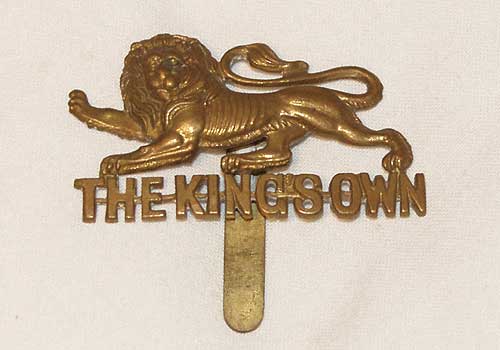 |
||||||||||||||||||||||||||||||
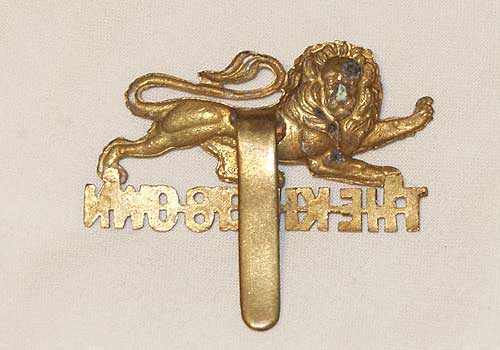 |
||||||||||||||||||||||||||||||
